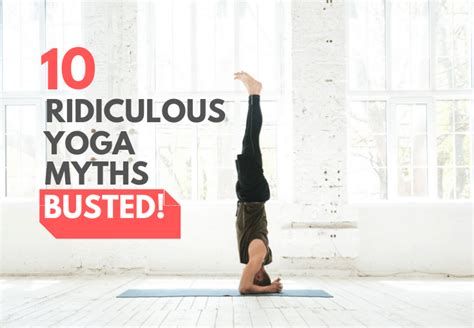Debunking Common Yoga Myths That Prevent You From Starting
Introduction
Yoga has exploded in popularity over the past few decades, becoming a global wellness practice. However, many myths surrounding yoga keep people from experiencing its benefits. From misconceptions about flexibility and body types to misunderstandings of the philosophy behind it, these myths create unnecessary barriers. This article confronts the most pervasive yoga myths and replaces them with evidence-based facts. By addressing these misconceptions, we aim to make yoga more accessible to everyone, regardless of age, background, or fitness level.
Key Concepts
Before addressing the myths, it’s essential to understand some foundational concepts of yoga. This will clarify how the practice works and its intended purpose:
- Asana: The physical postures commonly associated with yoga.
- Pranayama: Breathing exercises that regulate energy flow.
- Meditation: The mental practice of mindfulness and concentration.
- Hatha Yoga: A general style of yoga focusing on physical poses.
- Yoga Sutras: Ancient texts that outline the philosophy of yoga.
Historical Context
Yoga originated in ancient India over 5,000 years ago as a spiritual discipline. However, the modern, physical practice (asana) that dominates Western yoga emerged only in the early 20th century. Yoga was initially associated with ascetic practices and mental clarity, but its transition into fitness culture has altered public perception. With this shift, many myths have arisen from cultural differences and misunderstandings about the original intent of the practice.
Current State Analysis
Today, yoga exists in many forms—from gentle restorative sessions to vigorous power yoga classes. However, despite its growing popularity, only a fraction of the population participates actively. Surveys show that misconceptions such as “yoga is only for flexible people” or “it requires a certain body type” are among the top reasons people hesitate to start. This section addresses those myths and aims to debunk them.
Myth 1: “You Have to Be Flexible to Practice Yoga”
The Myth: Many believe they need to be naturally flexible to begin yoga.
The Reality: Yoga improves flexibility over time. It’s about the journey, not the starting point. Even the least flexible person will experience progress with consistent practice.
Myth 2: “Yoga Is Only for Young, Fit People”
The Myth: Older adults and those with limited mobility assume yoga isn’t for them.
The Reality: Yoga offers modifications for every body type and ability level. Chair yoga and restorative classes are designed for individuals with physical limitations, making it an inclusive practice.
Practical Applications
- Chair Yoga: Ideal for seniors and those with limited mobility.
- Gentle Yoga: Slower-paced classes focusing on relaxation.
- Adaptive Yoga: Uses props like straps and blocks to assist movements.
Case Studies
| Individual | Initial Barrier | Outcome with Yoga |
|---|---|---|
| John, 65 | Chronic back pain | Found relief with gentle yoga practices. |
| Sara, 32 | Low flexibility | Improved range of motion after six months of practice. |
| David, 40 | Obesity | Lost 20 pounds with regular participation in adaptive yoga classes. |
Stakeholder Analysis
Yoga affects various stakeholders, including practitioners, instructors, healthcare providers, and wellness businesses. Understanding their perspectives highlights how these myths can create missed opportunities for positive outcomes.
- Instructors: Benefit from diverse class participation, which enriches the teaching experience.
- Healthcare Providers: Recommend yoga to manage stress and chronic conditions.
- Wellness Industry: Expands reach by marketing yoga as inclusive and accessible.
Implementation Guidelines
To counter these myths, it’s essential to change public perception and make yoga more inclusive:
- Promote classes that cater to beginners and offer modifications.
- Use marketing that features diverse body types and abilities.
- Encourage instructors to educate students on non-physical aspects of yoga, such as mindfulness.
Ethical Considerations
With the commercialization of yoga, ethical issues arise regarding authenticity and cultural appropriation. It’s important to honor the origins of yoga while making it accessible to modern audiences.
- Use Sanskrit names and acknowledge yoga’s roots in Indian culture.
- Respect all practitioners regardless of ability, age, or fitness level.
Limitations and Future Research
Despite efforts to debunk myths, some barriers to yoga participation remain. Cultural resistance, financial constraints, and accessibility issues still exist. Future research should explore how technology—such as online classes and virtual communities—can bridge these gaps. Further studies should also investigate the mental health benefits of yoga beyond physical fitness.
Expert Commentary
Experts agree that yoga’s benefits extend far beyond flexibility and strength. It offers tools for stress reduction, mindfulness, and self-acceptance, which are more important now than ever. However, for yoga to be fully embraced, misconceptions must be dispelled. By breaking down these myths and making yoga accessible to everyone, we can unlock its potential to improve individual well-being and foster community connection.








